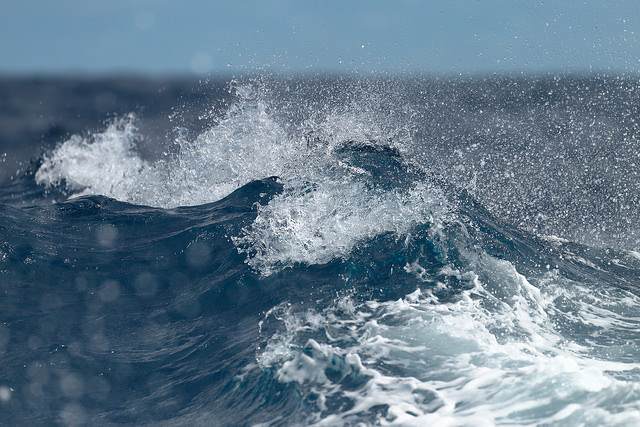Not just for surfing anymore | Photo: Ed Dunens, CC BY 2.0
Yesterday I read a story over at Science Alert about one of nine finalists in the Wave Energy Prize, and I was a little surprised that I’d never even heard of it. Here’s the basic rundown, and what it could mean for the future of energy.
***
If you haven’t heard of the Wave Energy Prize, I’m not honestly surprised since it slipped past my radar, too. One of the most impressive trends I’ve seen in the past decade or so has been the shift in governmental funding toward the development of new technologies through investment and competition. The creation and funding of ARPA-E, the energy division of the Advanced Research Projects Agency, in 2007 and 2009 respectively was arguably the biggest move in this direction, but the funding that led to the healthy competition in the space launch market in the US is also part of the same move. The Wave Energy Prize is funded by the Department of Energy (though not ARPA-E, which is technically under the DOE umbrella) as a way of fostering development in wave energy generation technologies. Basically, they’re running an X-Prize-like competition to try to create a healthy ecosystem of competing wave energy generation technology companies.
The way it works is pretty simple: the DOE is offering $2.25 million in prize money to the top three teams ($1.5 million, $500,000, and $250,000 for 1st, 2nd, and 3rd places) for whoever can achieve the highest “ACE” measurement, which is a best-guess of cost efficiency per kWh generated.
ACE, short (unbelievably) for “Average Climate Capture Width per Characteristic Capital Expenditure” is their way of trying to achieve a series of Wave Energy Conversion technologies (WEC) that meet the competition’s goal of having twice the cost efficiency of the current generation of technologies. Basically, they take two numbers and divide them by one another, and that’s the ACE score. The top number is their measure of energy efficiency, which they’re calling “Average Climate Capture Width.” It’s the amount of energy captured divided by the vertical distance traveled (the height of the waves), so it’s measured in kW/m. Basically it’s a measure of the efficiency of the energy captured from each wave. The bottom number is the cost of the device, as measured in something they’re calling “Characteristic Capital Expenditure.” It’s basically a size and density based metric for calculating materials cost (surface area x thickness x density x cost per mass). When you divide the top number by the bottom number, it gives you efficiency over cost, which is what they’re looking for. This project is designed to double the efficiency per cost ratio.
The test was set up first at the 1/50 scale, and there were 66 teams competing. As of March 1st, they’d narrowed it down to nine finalists (and two alternates) who’ll be moving on to compete at the 1/20 scale, which will be tested this summer. All of the top nine teams are receiving funding to build their 1/20 scale models. On July 1, the DOE will evaluate their progress and decide who meets the requirements to compete in the final test at the Naval Surface Warfare Center’s Maneuvering and Seakeeping Basin in Maryland, starting in August.
After that the top three will receive prize money that both acts as an incentive to win as well as providing more funding for commercialization.
This is such an exciting competition because, if all goes well, at the end we’ll have at least three companies with viable, efficient wave energy capture technologies. They’ll be American companies, which means the US economy will benefit from what’s honestly a relatively minor investment. They’ll allow the tapping of a major resource that could help with the US’s stated goal of energy independence. And they’ll be producing emissions-free electricity, adding to wind and solar as viable energy sources. It’s a great investment, and a great way to leverage a relatively minor investment in furthering technological and social goals. Did I mention I’m a fan of these types of things?
Anyway, you can learn about all eleven teams (the nine and two alternates) over at the Wave Energy Prize website. I can’t wait to see how it goes.
***
Thanks for reading! I only get paid in my own (and your) enthusiasm, so please like This Week In Tomorrow on Facebook, follow me on Twitter @TWITomorrow, and tell your friends about the site!
If you like our posts and want to support our site, please share it with others, on Facebook, Twitter, Reddit — anywhere you think people might want to read what we’ve written. Thanks so much for reading, and have a great week.
***
Richard Ford Burley is a human, writer, and doctoral candidate at Boston College, as well as an editor at Ledger, the first academic journal devoted to Bitcoin and other cryptocurrencies. In his spare time he writes about science, skepticism, feminism, and futurism here at This Week In Tomorrow.

